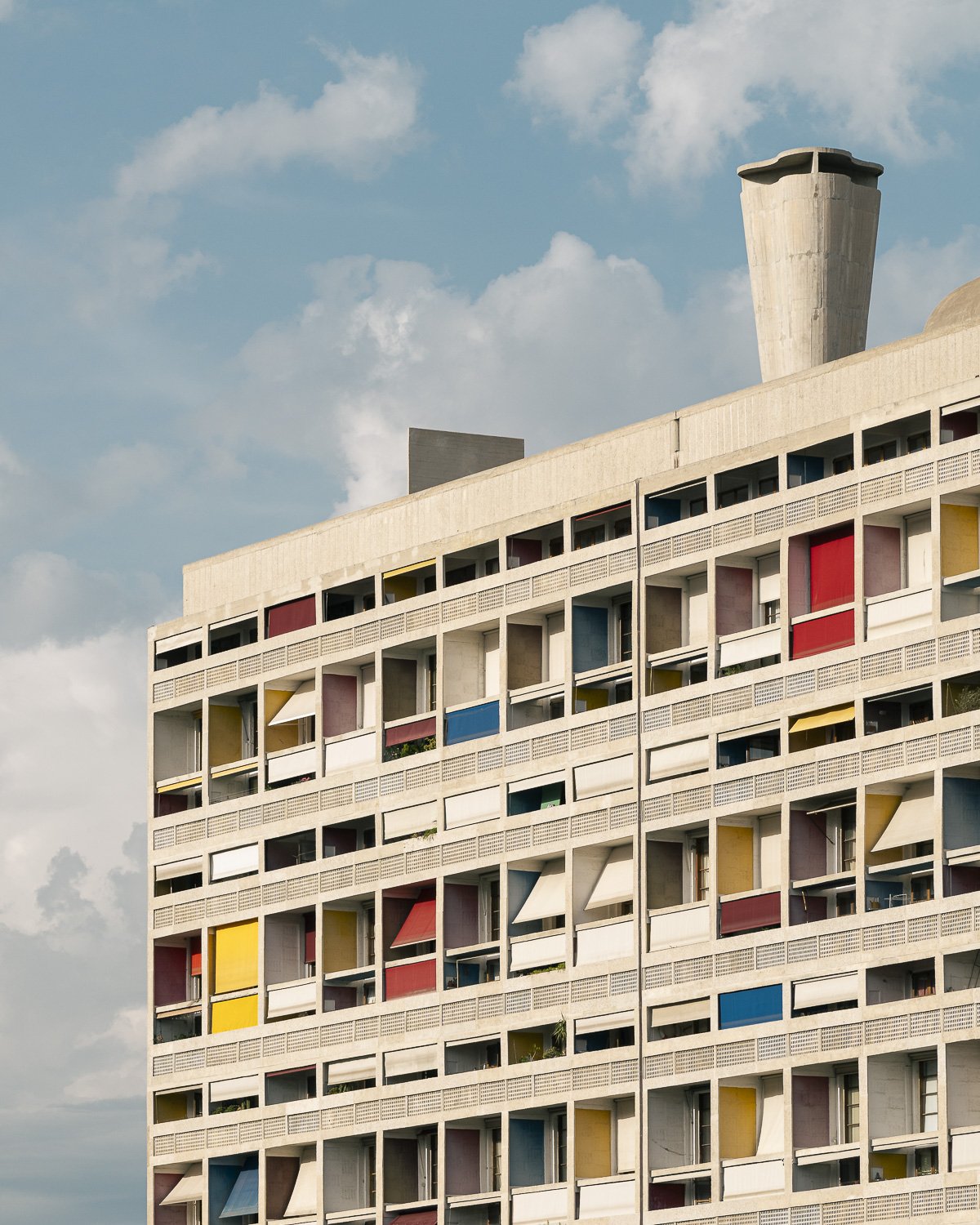La Cité Radieuse
Le Corbusier (1952)
"A good architect must infuse his creations with a sense of beauty and functionality"
- Le Corbusier -
La Cité Radieuse stands as an iconic symbol of modernist architecture and urban planning, envisioned by the pioneering architect Le Corbusier. Located in Marseille, France, this innovative housing complex was completed in 1952 and remains a celebrated example of Brutalist architecture.
Designed as a vertical utopia, La Cité Radieuse is a striking departure from traditional urban development. Rising boldly from the landscape, its concrete facades are punctuated by colorful accents and geometric patterns, while its modular design provides residents with a sense of both community and individuality.
At the heart of Le Corbusier's vision for La Cité Radieuse is the concept of the "vertical garden city," where inhabitants can live, work, and socialize in a self-contained environment. The complex boasts a range of amenities, including shops, restaurants, a hotel, and even a school, all integrated within its structure. Its rooftop terrace offers panoramic views of Marseille and serves as a communal space for recreation and relaxation.
Beyond its architectural significance, La Cité Radieuse embodies Le Corbusier's belief in the transformative power of design to improve society. By prioritizing light, space, and functionality, he sought to create a harmonious living environment that fostered both physical and spiritual well-being.
Today, La Cité Radieuse stands as a testament to Le Corbusier's visionary ideals, attracting visitors from around the world who come to marvel at its bold forms and innovative concepts. As a pioneering example of modernist architecture, it continues to inspire architects, urban planners, and dreamers alike, reminding us of the enduring power of visionary thinking to shape the world around us.
















